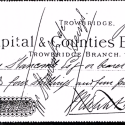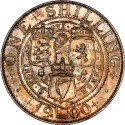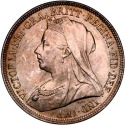A Scion Society of The Baker Street Irregulars

Data! Data! Data! – The Cardboard Box
“‘Data! Data! Data!‘ he cried impatiently. ‘I can’t make bricks without clay.’”
– The Adventures of The Copper Beeches (COPP)

This column is composed of material (Data!) developed for a short course called Appreciating Sherlock Holmes that I teach twice a year in the Community Education Life Enrichment Program for a local community college. It is composed of “points of information” that are common to many / most / all of the 60 Canonical stories.
The information here has been researched by me or borrowed / stolen from many efforts of other Sherlockians.
HERE GOES – – This month’s story The Adventure of the Cardboard Box
CHRISTOPHER MORLEY SAID . . .
This story, first written for The Strand in 1893, was withheld from book publication until 1917; the author believed it made chivalrousness reflections on female character! The very respectable Miss Cushing receives an unpleasant package in the mail: a tobacco box filled with coarse salt in which are two “very singular enclosures.” When you observe Holmes suddenly staring at Miss Cushing’s profile you are getting “warm.”
DUMMIES SHORT SUMMARY (From Sherlock Holmes for Dummies by Steven Doyle & David Crowder)
“This story of marital infidelity and murder was considered too racy for the American edition of The Memoirs of Sherlock Holmes and didn’t appear in book form in America until His Last Bow.”
PUBLISHING HISTORY
· This was the 16th of the 60 stories published in sequence
· It was first published in England by The Strand Magazine, January 1893
· It was published in the U.S. in Harper’s Weekly, January 14, 1893
· It is part of The Memoirs of Sherlock Holmes collection published by both George Newnes, Ltd. in London and Harper Bros., New York, 1894
· The British illustrator was Sidney Paget
HOW MANY WORDS?
According to C. E. Lauderback, 1960 – – found on SHERLOCKIAN.NET website of Chris Redmond, at 8,730 words CARD has the 37th most words (#1 is VEIL – 4,499, #56 if NAVL – 12,701)
THE BEST OF SHERLOCK HOLMES (How do Sherlockians rate this story?)
1999 – The Baker Street Irregulars voted it 26th of the of the 56 short stories
1999 – The Sherlock Holmes Society of London voted it 31st of the 56 short stories
CLASSIFYING THE CASE (From the Wandering Gipsies of Grimpen Mire of Decatur, Alabama)
This case is one of 23 classified as a MURDER and one of 14 where the perpetrator was either killed, arrested, or otherwise satisfactorily handled.
CHRONOLOGICALLY SPEAKING
Doyle was often very vague about stating WHEN the tale took place and included few contemporary references to help. Whether this was done intentionally or unthinkingly, the dating of events in the Canon is a very popular pastime pursued by several of our “scholars” researching and justifying their results to no end. We will again default to William Baring-Gould’s dating of Saturday, August 31 to Monday, September 2, 1889 making it 25th of the 60 stories in time. This means that Holmes is 35 and Watson is 37.
WHAT ELSE HAPPENED IN YEAR 1889?
It is always interesting to see what else in happening at the same time as the stories.
· British South Africa Company Charter awarded.
· Transvaal claimed to be “encircled” by Rhodes’ concessions in East Africa. Rhodesia established.
· Great London Dock Strike; the “Dockers’ Tanner”; growth of unskilled workers unions; New Unionism; Gasworkers’ Union formed.
· March 30, Early used of photographs in newspaper: Illustrated London News runs Cambridge and Oxford boat crews.
· Woolwich Ferry starts.
· Act to prevent cruelty to children.
· Establishment of telephone company.
· Board of Agriculture becomes government department with minister.
· General Booth publishes Survey of London Life and Labour.
· Italy takes Somalia and Ethiopia.
· The Moulin Rouge first opens its doors.
· North and South Dakota, Montana and Washington admitted as U.S. states.
· Mayerling tragedy: suicide of Crown Prince Rudolph of Austria and Baroness Maria Vetsera.
· Treaty of Acciali: Ethiopia made Italian protectorate.
· End of Portuguese Empire in Brazil; republic proclaimed.
· Abdication of King Milan of Serbia; accession of Alexander.
· Promulgation of Japanese Constitution.
· Paris Exhibition: proof of industrial development in France.
· Work on Panama Canal stopped; French company bankrupt.
· Bismarck introduces Old Age Insurance in Germany.
· Erection of Tacoma Building in Chicago. First skyscraper, 13 stories high.
· Robert Browning publishes Asolando, poem.
· Conan Doyle publishes A Sign of Four.
· Jerome K. Jerome publishes stories, Idle Thoughts of an Idle Fellow, Three Men in a Boat.
· Mark Twain publishes A Connecticut Yankee in King Arthur’s Court.
· Robert Louis Stevenson publishes Master of Ballantrae.
· Gerhart J. Hauptmann publishes Vor Sonnenaufgang, German realistic play.
· Dvorak presents Symphony No. 4 in G major.
· Gilbert and Sullivan present The Gondoliers.
· Renoir paints Girls Picking Flowers.
· Van Gogh paints Man with a Pipe (self-portrait), The Olive Grove.
· Cezanne paints Harlequin.
· Tschaikovsky introduces The Sleeping Princess ballet music.
· Eiffel Tower completed, 985 feet high, taller than the Great Pyramid, become highest structure on earth.
· Hollerith’s punched-card system widely used in industry.
· Eastman’s Kodak camera comes into production, using photographic film.
· Mering and Minkowski show that the pancreas prevents diabetes.
· First linotype machine in use.
· Panhard and Levassor begin using Daimler’s engines in French cars, using modern layout.
HOLMES AND WATSON – PERSONAL INFO
The gentlemen are sharing quarters at 221B.
DRAMATIS PERSONAE
A small and dull cast.
· SUSAN CUSHING, a quiet maiden lady of 50
· SARA CUSHING, her younger sister
· MARY CUSHING, a third, and youngest, sister
· JIM BROWNER, married to Mary
· ALEC FAIRBAIRN, had an adulterous affair with Mary?
· LESTRADE
· ALGAR of the Liverpool force, a friend of Holmes who made a few local inquiries
· INSPECTOR MONTGOMERY, of the Shadwell station – took Browner’s statement.
“QUOTABLE SHERLOCK”
· Watson in narration – – “Appreciation of nature found no place among (Holmes’) many gifts, and his only change was when he turned his mind from the evil-doer of the town to track down his brother of the country.”
· Holmes to Watson – – “Your hand stole toward your own old wound….”
· Holmes to Watson & Lestrade – – “You have observed, of course, that the ears are not a pair.”
· Holmes to Lestrade – – “I should prefer that you do not mention my name at all in connection with the case, as I choose to be only associated with those crimes which present some difficulty in their solution.”
· Holmes to Watson – – “Although he [Lestrade] is absolutely devoid of reason, he is as tenacious as a bulldog when he once understands what he has to go.”
· Holmes to Watson – – “We approached the case, you remember, with an absolute blank mind, which is always an advantage. We had formed no theories. We were simply there to observe and to draw inferences from our observations.”
· Holmes to Watson – – “What is the meaning of it, Watson? What object is served by this circle of misery and violence and fear? It must tend to some end, or else our universe is ruled by chance, which is unthinkable. But what end? There is the great standing perennial problem to which human reason is as far from an answer as ever.”
HOLMES’ FEE
No mention. Lestrade called Holmes in. We believe there was a retainer arrangement between SW and the Yard. This would help us understand how Holmes made a living, and also why he let Scotland Yard take credit for his solutions. (Of the fully recorded cases there are at least nine, REIG, BLAC, SIXN, GOLD, ABBE, CARD, DYIN, STUD, VALL, in which Holmes participated solely in order to assist the police…For Holmes there can have been little reward save the experience, and the privilege of paying his own expenses in following up on clues. (I think I got this from someone named McQueen – sorry)
SHERLOCK ON THE BIG SCREEN & THE LITTLE SCREEN
Only attempted twice. Not enough “action” for the screen.
1923 The Cardboard Box with Eillie Norwood and Hubert Willis. The National Film and Television Archive at the BFI has viewing copies of this film, but…
1994 The Cardboard Box with Jeremy Brett and Edward Hardwicke in the BBC/Granada series.
SHERLOCK HOLMES IN DISGUISE
The Master of disguise used the deception of being disguised 14 times in 11 of the 60 stories.
But none were used in this Story
UNRECORDED CASES (That involved Holmes)
Watson would tease / torture his readers with “I know something you don’t.” Oh my, how Sherlockians love this category. I have in excess of over 150 examples in my collection.
· Aldridge, who helped Holmes and Lestrade in the bogus laundry affair
FAINTING IN THE CANON (courtesy of Sherlockian Karen Murdock)
Fainting is extremely common in the Canon, appearing, in some form, in 37 of the 60 tales. In 21 cases someone actually faints. In 22 cases someone almost faints. And in 5 cases someone pretends to faint. In this month’s story but, in this tale, no one faints, almost faints, pretends to faint, or even mentions fainting.
HOLMES’S PUBLISHED & PROJECTED WORKS
Sherlockians love this topic and are regularly searching for these items. Holmes mentions published or projected works in 11 of the stories. In CARD, we have this one:
· Monographs on the human ear – Two separate monographs published in the Anthropological Journal
IS THERE A DOCTOR IN THE HOUSE?
Victorian London, in the Holmes’ time, had approximately 1 doctor for every 100 people. 31 of the 60 tales have a doctor in them. This, of course, does not count Holmes’ Boswell. This listing is by Leslie Klinger in the Winter, 2015 edition of the Baker Street Journal. Whether it was Doyle or Watson, a doctor wrote the story. We actually have 4 doctors in this story.
· 3 unnamed medical students who roomed in Susan Cushing’s House
· Unnamed – Susan Cushing’s “medical adviser,” a grave young gentleman in black
NEWSPAPERS (Real and Fictional)
Though included in only 20 tales some of our more obsessed Sherlockians love this one. There was no mention of the press by name in this tale.
ANNOTATED SHERLOCK
The 60 Sherlock Holmes stories used English as spoken in England from the 1880’s until the 1910’s. Some words are foreign to us today and need a “contemporary translation.”. For example:
· “en rapport” – French: harmony of relation.
· “honeydew tobacco” – Smoking tobacco sweetened with molasses.
· “the pinna” – The projecting portion of the exterior ear.
· “blue ribbon” – On the wagon. Not drinking. From an organization of tea totallers called the Blue Ribbon Army in 1878.
· “parliament has risen” – adjourned for summer recess
· “brown study” – a vacuous or melancholy state of mind
· “antimacasser” – a covering hung over backs of chairs and sofas to protect furniture from hair grease, took its name from a popular hair oil – Macasser Oil
WEAPONS (from A Compendium of Canonical Weaponry by Dettman and Bedford)
… “a means by which one contends against another” … utilized in 57 of the 60 tales (all but CREE, 3STU, & YELL). There are several general categories to classify “weapons” that include: firearms, human agents, cutlery, animals, blunt instruments, extortion, toxin, blackmail, and miscellaneous. In our story, which is short, you will find just two examples:
· Knife – Which James Browner used to cut off the ears of his wife, Mary, and her lover, Alex Fairbain, in order to send them to his wife’s shrewish, meddling sister.
· Oar – With which Alex Fairbairn tried to defend himself and Mary Browning against the fury of her husband.
 Frank Mentzel, aka Merridew of Abominable Memory, has recently completed the Spring 2019 semester of his Appreciating Sherlock Holmes class, and is retiring from teaching the course. He had planned to start working in his garden but is has now been raining for four straight days.
Frank Mentzel, aka Merridew of Abominable Memory, has recently completed the Spring 2019 semester of his Appreciating Sherlock Holmes class, and is retiring from teaching the course. He had planned to start working in his garden but is has now been raining for four straight days.





